#Lower Gardens
Text
Peterhoff Palace Complex

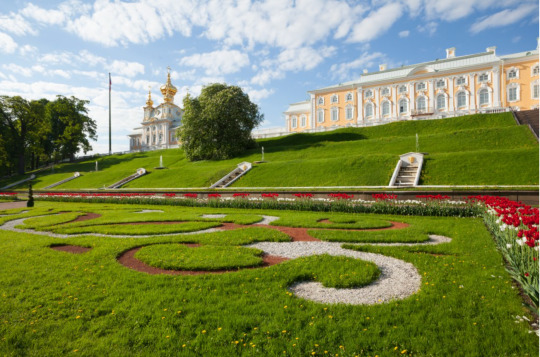



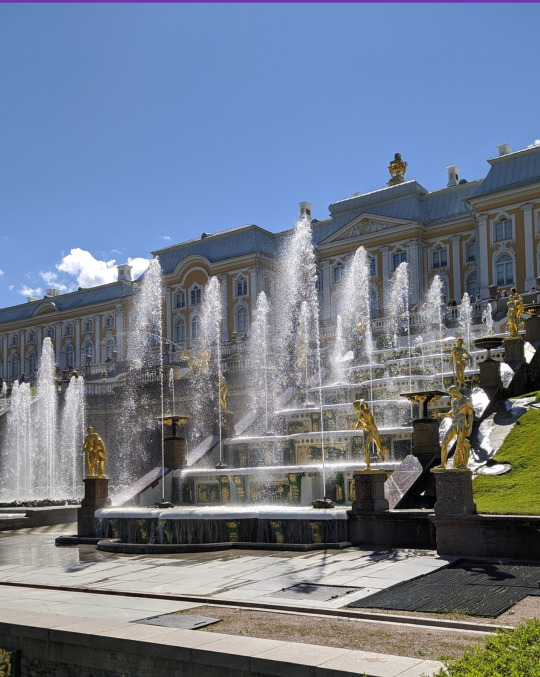
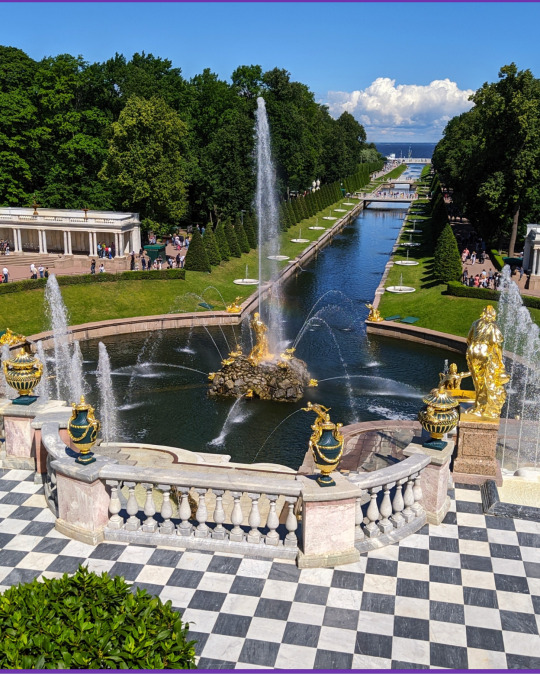
Photographs: Different views of Peterhof, which, rather than one specific place, is an astoundingly beautiful complex of palaces, gardens, pavilions, and fountains. The photos here and the text are a mere preview of a fraction of the place in all its grandeur.
The Grand Palace, Lower and Upper Gardens and Fountains
The Peterhoff Palace (which comes from the Dutch "Pieterhof," meaning "Pieter's Court") is a complex of palaces, gardens, pavilions, and fountains located in Petergof, Saint Petersburg, Russia, commissioned by Peter the Great in response to Louis XIV Palace of Versailles in France.
Peter the Great began constructing his new capital, St. Petersburg, in 1703 after successfully adding Swedish provinces to Russian territory. Saint Petersburg allowed Russian access to the Baltic Sea through the Neva River that flowed to the Gulf of Finland.
Throughout the early 18th century, Peter the Great built and expanded the Peterhof Palace complex. Based on his sketches, he constructed the Monplaisir Palace (French: "my delight"). This would be Peter's summer retreat that he would use on his way coming and going from Europe. Later, he expanded his plans to include a group of palaces and gardens further inland, on the model of Versailles.
Most of the Peterhoff land is comprised of what is called the "Lower Gardens." In the middle of the lower gardens is the Grand Palace. The area behind this palace is the "Upper Gardens" and is comparatively smaller. The Grand Palace is not the only historic royal building in Peterhoff. The palaces of Monplaisir and Marli, as well as the pavilion known as the 'Hermitage,' were all raised during the initial construction of Peterhoff during the reign of Peter the Great.
There are a number of cascades and fountains through the grounds, which have various symbolic meanings and are in themselves great technological achievements. The greatest of these is that all of the fountains in Peterhoff operate without the use of pumps. Water is supplied from natural springs and collects in reservoirs in the Upper Gardens. The elevation difference creates the pressure that drives most of the fountains of the Lower Gardens.

Gothic Chapel in Peterhof: An Orthodox church in the name of Saint Alexander Nevsky situated in the Alexandria Park; Nicholas I ordered its construction to complement the Cottage Palace
Alexandria Park, the Cottage Palace, and the Farmers Palace
To the east of the main park at Peterhof lies an expanse of landscaped parkland in the English style, named after Alexandra Fedorovna, wife of Nicholas I. The land was used as a royal hunting ground for most of the 18th century and left to go wild after the court moved to Tsarskoe Selo.
In 1825, the land was passed to Nicholas I, who commissioned a Scottish architect and landscape gardener to create an English-style estate with a "cottage" palace and home farm. This was partly a concession to Alexandra (nee Charlotte of Prussia), who found the pomp and grandeur of court life oppressive. Alexandra loved the cottage. The Cottage Palace was completed in 1829 and became the permanent summer residence of the Tsar's family. Alexandria Park is one of the best-landscaped parks on the outskirts of St. Petersburg.
The building is equal parts seaside villa, Gothic castle, and English farmhouse, but extremely elegant, with several charming decorative details. The palace's interiors exemplify the private tastes of Nicholas and Alexandra and their children and grandchildren. The spectacular trompe l'oeil murals around the staircase, depicting gothic arches and vaults, and Nicholas's Naval Study, with superb views over the Gulf of Finland, are particularly impressive.
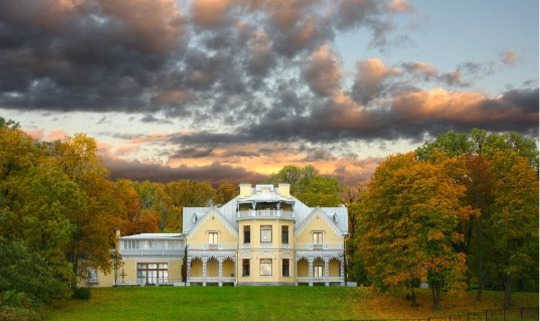
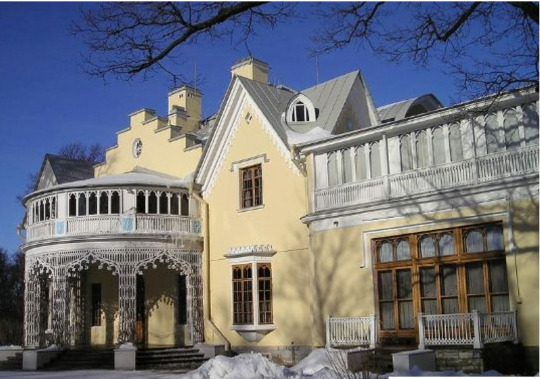

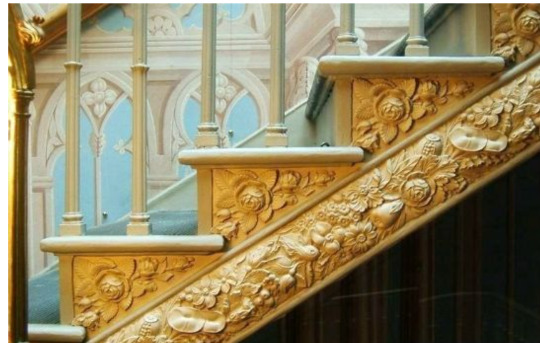
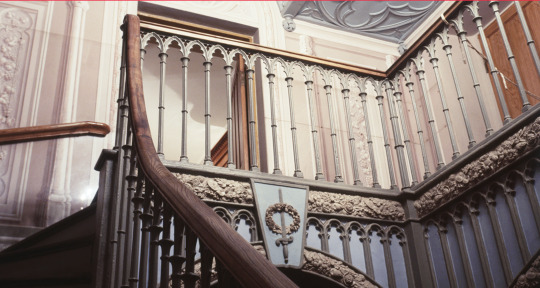
The Farm Palace was initially a pavilion in Alexandria Park close to the Cottage Palace and Gothic Chapel. Meant to be a pastoral farm with a row of household buildings, it was later expanded into a summer residence for the family of Tsesarevich Alexander Alexandrovich of Russia. The palace became the favorite summer residence of Alexander II and his family. After many reconstructions, the house was named "The Farm Palace" in 1859. It would eventually be a favorite of Alexander III and Nicholas II.
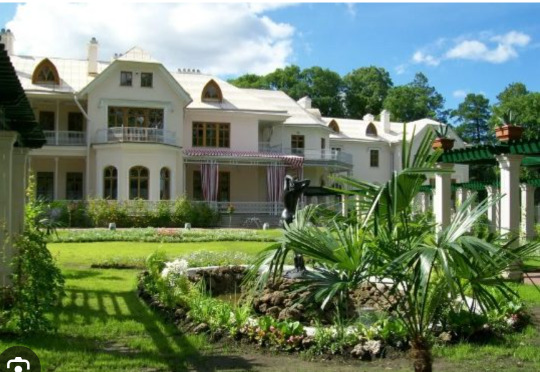
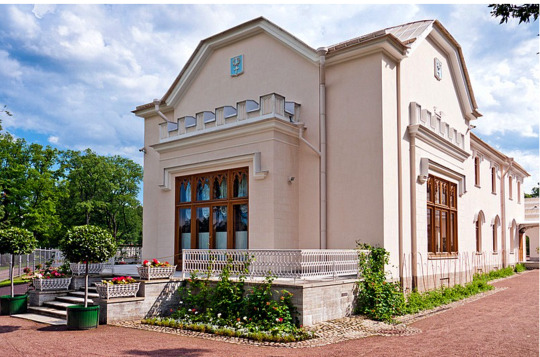

The Lower Dacha at Peterhoff (badly damaged in World War II and destroyed in the 1960s) - in the process of reconstruction
The Lower Dacha was in Alexandria Park, part of the Peterhof complex created by Tsar Peter I in the early 18th century as an Imperial summer residence. The palace was the home of Tsar Nicholas II while in residence at Peterhof (it was built for him), and several of his children were born there. It was badly damaged during the Second World War and was destroyed in the 1960s. The Lower Dacha is in the process of being restored. It is expected that the restoration will be completed by 2025. The picture below where the intact building can be seen, is from the early twentieth century. Photographs of the ruins have been included as well.
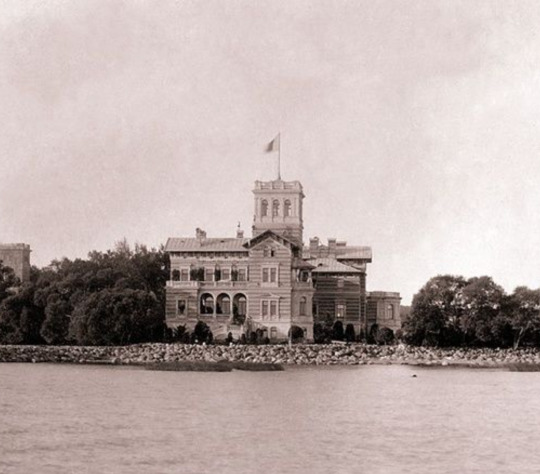
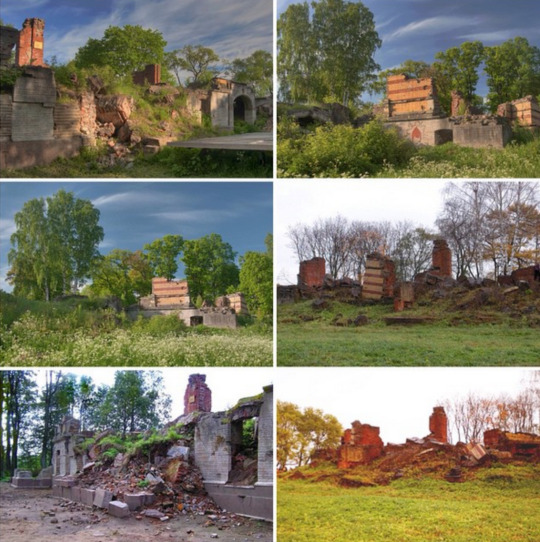
#Peter the Great#Sweden#Finland#Upper Gardens#Lower Gardens#Mon Plaisir#Grand Peterhoff Palace#Great Samsom#Neva River#The Farm Palace#The Cottage#The Lower Dacha
7 notes
·
View notes
Text
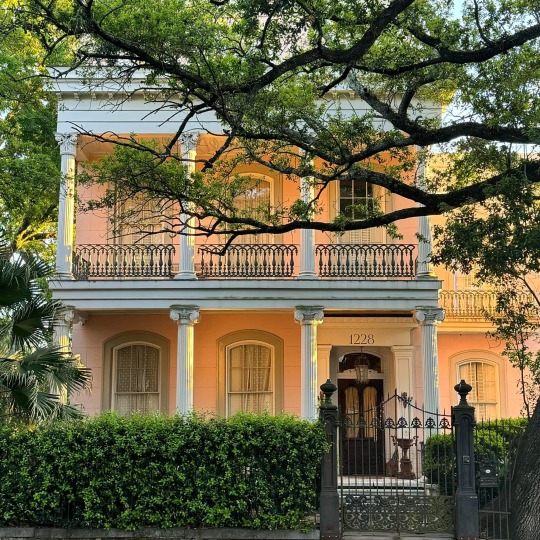
Lower Garden District
New Orleans
#aesthetic#architecture#new orleans#louisiana#cityscape#tropical#creole architecture#landscape#palms#lower garden district
54 notes
·
View notes
Text

Happiest Halloween my dudes!
As a treat, accept this Wirt!Boimler from my Strange unknown words AU (lower decks mixed with over the garden wall)
#bradward boimler#brad boimler#wirt#star trek lower decks#star trek#lower decks#over the garden wall#star trek fanart#otgw fanart#fanart#stay tuned as im probably gonna draw some more for this au sometime#halloween#halloween my beloved
61 notes
·
View notes
Note
I have a very genuine question about the tipping post I promise I didnt read it in bad faith: are people who simply cannot afford to tip not “allowed” to eat out? I’m just thinking about how it works where I am from and while tipping is the norm here if someone doesn’t tip because they can’t afford it it really isn’t a big deal (+tipping norm here us only 10%). so if a poor family goes out to eat to celebrate something and they can barely afford the meal would they still be expected to tip 20% because they shouldn’t eat out if they cant afford it? thank you in advance I’m really curious
If it helps, don’t think of the tip as a separate thing. It is part of the cost of your meal. So if you cannot afford to pay for the cost of the meal including the tip you cannot afford to eat at that restaurant. This is something I myself have to calculate when I’m deciding if I want to eat at a particular restaurant- if I have $15 I can’t go to a restaurant and order a $20 entrée and then refuse to pay the remaining cost, and likewise if I have $15 I can’t order a $15 entrée and expect not to pay the server for their service.
Now that doesn't mean families who can't afford a pricy restaurant can't eat out at all. Since it is a % of your bill you can try to go for a cheaper restaurant (smaller bill = smaller tip), or if you go to a counter service place where you serve yourself you’re not expected to tip 20% (sometimes they have a jar out you could kindly throw a dollar or more in, but there is much less expectation to tip because the workers at a place like that receive a full minimum wage, more on that in a sec). I will also say in my lived experience poor families in America understand and tip well, I’ve almost exclusively been under tipped by wealthy people (which is what kicked off the debate on twitter- if your bill is $700 then you obviously can afford to tip a full 20%, no destitute families are spending $700 on one meal).
Technically speaking you can get away with 18% as a tip, and if you go down to 15% your waiter will think you’re cheap and be annoyed (15% definitely implies you were unhappy with their service) but that is the lowest possible threshold of acceptability. 10% is not an acceptable rate here, and 20% is now the expected norm for good service, and going up from there for great service. And I would never, ever not tip at all. I can only imagine not tipping if like the server had done something deeply offensive or dangerous or something. I've never encountered a situation where I felt the server didn't deserve any tip at all.
Because you’ve asked in genuine good faith I’m going to provide some more context to help you understand a bit more why this is the way it is-
Waitstaff in america are wildly underpaid. Our federal government assumes the tips are part of their expected income, and so a) they are taxed on assumed tips and b) it is legal to pay them less than standard minimum wage. Currently the tipped federal minimum wage is $2.13/hr. Now, states set their own individual rates so some states do better, but $2.13/hr is the lowest they can all legally go. And you’ll notice in that link it mentions the assumed tips and taxing them. I said on my original post, when I worked as a tipped waitress I made $2.68/hr and sometimes my biweekly paycheck was like $60 total. Imagine trying to survive on $120 a month, you absolutely cannot. Tips made up my actual wage, and were the paycheck I depended on to pay for my basic needs. I relied directly on customers to choose to do the social convention of tipping for survival, and when someone would choose to do otherwise it was utterly devastating.
Another thing customers sometimes don’t realize is your waiter may not be allowed to keep all of the tip themselves. It’s a common practice to pool tips amongst all the waitstaff and then divide them equally, and many places require that you tip out other employees there. So if you give me $10 as a tip I might be actually giving a large chunk of that to bussers, bartenders, etc. Or maybe we pool tips and someone else stiffed my colleague so now all of us are sharing your $10 tip. So also keep in mind that the money you leave as a tip very often does not go entirely to the actual waiter, so a big tip can actually become pretty small much faster than you would think.
(and that's just legal practices, wage theft and illegal practices run rampant in the restaurant industry, just fyi)
If you are wondering why tipping culture here is so grim, it is because of slavery. Tipping got big here as a way to keep forcing Black Americans into working for free, now with a small tip but still no actual wage. It was designed for oppression. Waitstaff are overwhelmingly not wealthy people. It is very common for them to be on food stamps, require housing assistance, or to otherwise be living under the poverty line. If you are eating out and not tipping because you yourself are poor, you are taking money out of someone else’s poverty wages to do so. When we debate minimum wage here in america, conservatives are really good at painting a picture of waitstaff being perky middle class college kids making an extra buck, or teens from wealthy homes wanting some spending money. There is an implication that they don't really need the money that badly. That is not the reality of who makes up most serving jobs in america. Minimum wage workers are likely to be in poverty, they’re likely to be women and specifically they’re likely to be women of color. Americans of color are significantly more likely to be working at minimum wage than white americans. There is a pretty sizeable number of minimum wage workers who are over 50, and a not insignificant amount of them who are mothers who support their families. There are also those teens who just want extra cash, and they deserve good compensation for their hard work too, don’t get me wrong, but they are only a portion of who makes up the minimum wage workforce.
If you’re like “But that’s such a shitty system, you’re saying it’s pitting poor people against each other for basic human comforts!” yup. I 100% agree. I am a vocal proponent of raising the minimum wage for that reason. I also advocate for a Universal Basic Income, because I understand that when it comes to small mom & pop restaurants the owners aren’t always making a ton of money either and it seems like truly no one is winning in this system. It is set up to oppress and to demean and to grind us all down. There are lots of orgs in America that are fighting to improve the system, or to radically change the system. There are also restaurants that have tried to do things differently- there’s a wine bar in my city that says specifically on their menu that their wine is more expensive because they pay their workers a true livable wage so there is no tipping there. Instead as a customer I pay a higher upfront cost that covers the true expense of running the bar- including server wages. I love that, I wish more places would do things like that. In the meantime, when I’m choosing where to eat I factor in a tip of 20% when calculating my estimated bill, because paying for service is part of the cost.
Refusing to tip fully in america is not doing anything to change the system. It does not make restaurant owners rethink their pay structure, it does not put pressure on our government to fix minimum wage, it does not make a political statement. It just means your server is going home wondering if they can afford their own meal that night.
Thank you for asking for clarity, I hope this helps. Please feel free to ask more if you have any remaining confusion or are curious about other aspects of american culture. If I can answer and the questions are respectful, I am happy to reply!
#also fwiw#you know those big american chain restaurants people like to make fun of?#like olive garden or red lobster or applebees or whatever?#a lot of the appeal of those types of restaurants is they make a big production over you as a customer like you're at a high end restaurant#but the prices are much lower than an actual nice restaurant#so that is why so many americans view going to outback steakhouse as a big treat#it's not that we don't know what a good steakhouse is#it's that those places give you that service but your steak is $20.99#and if you are like 'ha! my family wishes they could afford chilis"#no yeah those places are not cheap i feel you#but that's exactly the appeal of those big chains#a real nyc steakhouse starts at like $40 for steaks#and goes up from there#now look at outback's menu#now you get it?#so yeah if you're not a wealthy family and you have a celebration coming up you look for a restaurant in that vein
160 notes
·
View notes
Text

#star trek#star trek lower decks#nutrek#there was a long post with people debating#but reading it made me tired#its all star trek#you dont have to like all of it#but its all star trek#back in the day people said ds9 wasnt star trek bc they were on a space station#yada yada#its all star trek just enjoy it#or dont i guess#gatekeeping is so stupid#“gardens need to be pruned” its not a garden its a fandom#just let people enjot things god#its not that hard#you don't have to agree with every decision that gets made#it's still all star trek so just shut up okay#you need to calm down
22 notes
·
View notes
Text
Is it confession time? I feel like it might be confession time…
I have this habit - I think many of us do - of only half glancing at usernames when I first come across them, and just making them into a word in my head. And then I say that word every time I see that username, therefore reinforcing my own believe. And eventually (though sometimes never) something makes me stop and actually read a username, letter for letter, and go oooooh.. 😯
I know NOW that @gardenerian is Gardener Ian. But I didn’t know that for the first three to five months of following Mel. And two weeks ago I went to Pizza Express and I realised where the word I was saying in my head every time I saw one of Mel’s posts actually came from…
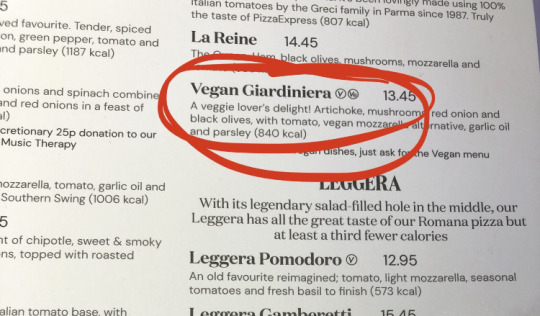
I’m afraid to say that for a pretty long time there lovely Mel, you were a vegan pizza in my head… 🤷🏽♂️
#but like… at least it’s with tomato#and it’s pretty healthy#full of all kinds of vegetables#I feel that at least spiritually Gardener Ian would actually approve… right?#usernames are a funny thing. especially in a world made of all lower cases.#Gardener Ian#does NOT equal#Giardiniera#sorry about that Mel#hope it makes you smile#you’re lovely#I would nom you up like a pizza if I could#monch monch monch
36 notes
·
View notes
Text
I wonder if there's anyone who still hasn't moved on from the gardening part of the event. They're just peacefully tending to their Violant-Wing Lily Caps in a deserted glasshouse, oblivious to the screaming and cannon fire and all the buildings in London turning into half-building / half-flesh monstrosities.
#fallen london#The London Horticultural Show#Estival#Spoilers#TBH I hope we get to keep the gardening portion around except perhaps with a lower EPA
36 notes
·
View notes
Text
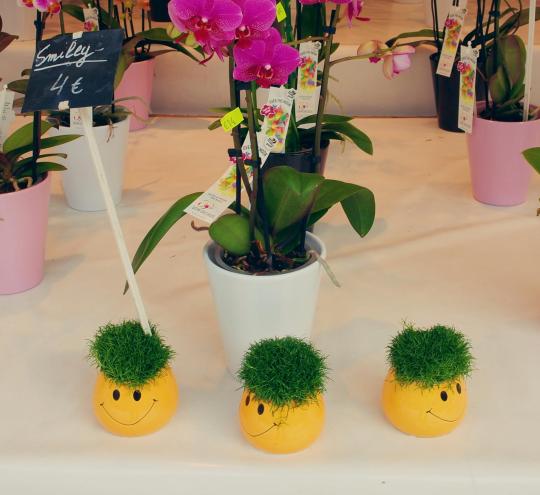
Smiley - €4
4 notes
·
View notes
Text
A Note From Dr. James
Dearest reader,
I have always believed that transparency in academic research is of the utmost importance. It only makes cens(us. You'll understand the joke in a moment) to release this information to the public.
This project, funded by the Institute for Higher Education, is part of a larger release of pre-democratization documents to show changes in government structure. However, this record is of a peculiar manner: it is relevant to a region known as Lower Valley, which is largely uninhabited and very rarely included in government data.
This record, a series of reports recorded by an author known only as Census Enumerator 71795, depicts a region of our nation that is not only rarely seen, but depicts a fantastical, almost unbelievable picture of the life and culture in the secluded Lower Valley area.
Although some of the Enumerator's claims are highly suspected to be embellished, such as the presence of one of the long extinct dragons and a prevalence of what seems to be witchcraft, we believe he depicts a mostly honest look at the life lived in this region nearly two centuries ago.
We hope you enjoy, digitally transcribed for your enjoyment, Reports on the Lower Valley Census Bureau
Most sincerely,
Dr. Hamish James
Dr. Hamish James is an associate professor of History at the Institute for Higher Education. He specializes in pre-democratic history, particularly that of law and lifestyle. When not in the Institute, you may find him on beaches and in forests with his wife and cats.
Thanks is due to the Institute for Higher Education, the Educational Management Bureau, and the Lower Valley Historical Center.
#the lower valley census bureau#creative writing#writing#writeblr#reports on the lower valley census bureau#original writing#original character#original story#serial fiction#writers#fantasy#this story is inspired by#over the garden wall#gravity falls#welcome to night vale#dracula daily#lord huron#and lots of other works#written by hai-yun on tumblr
11 notes
·
View notes
Text


Plant of the Day
Wednesday 3 August 2022
This Eucomis species (pineapple flower) makes a late summer display in this herbaceous border. The plant may look exotic, with their flower spike being crowned by a tuft of leaves, but they are reasonably hardy and easy to grow from a bulb.
Jill Raggett
#eucomis#pineapple lower#pinkflowers#bulbousperennial#bulbous#bulb#plants#writtledesign#gardens#horticulture#garden#herbaceousborder#essex#rhshydehall#hydehall
78 notes
·
View notes
Text
wehhhh I don't wanna start doing Tasks :(
#spoons are lower than id like i might not be able to garden :/#oh well gonna start with some less-physical tasks and maybe take a nap in a bit and see how the day goes
4 notes
·
View notes
Text
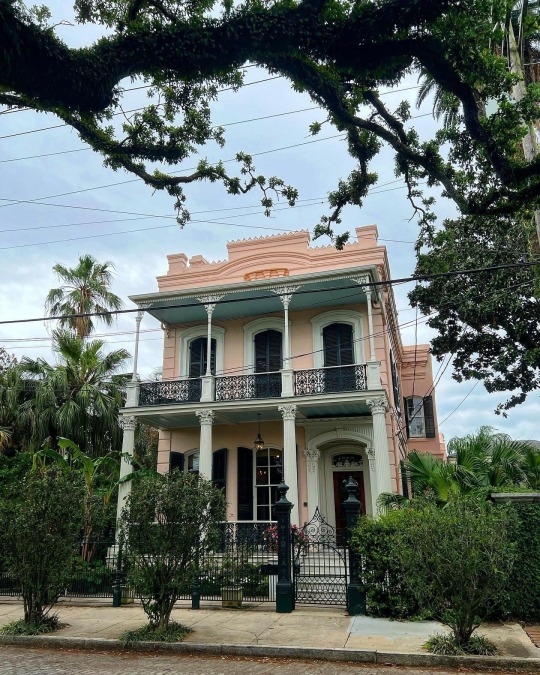
Lower Garden District
New Orleans
#aesthetic#architecture#new orleans#louisiana#cityscape#tropical#creole architecture#lower garden district#Nola
87 notes
·
View notes
Text

Some of you were curious about Strange Unknown Worlds AU, so have some more
Also, Mariner is the bird in this, I changed the species to robin so it matches her color scheme more
#is this gets popular enough I will drop the whole story + headcanons later this week#star trek#star trek lower decks#star trek lwd#lower decks#brad boimler#bradward boimler#samanthan rutherford#beckett mariner#over the garden wall#otgw#strange unknown worlds au#star trek fanart#fanart
32 notes
·
View notes
Photo
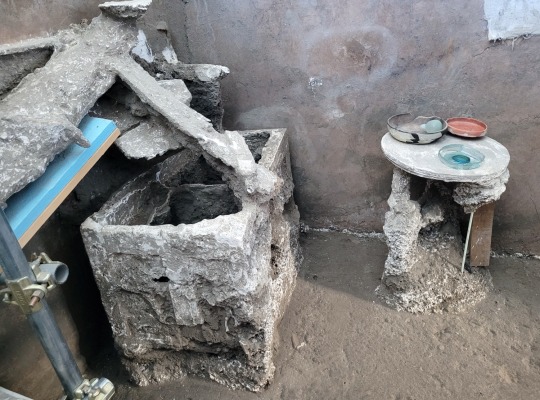
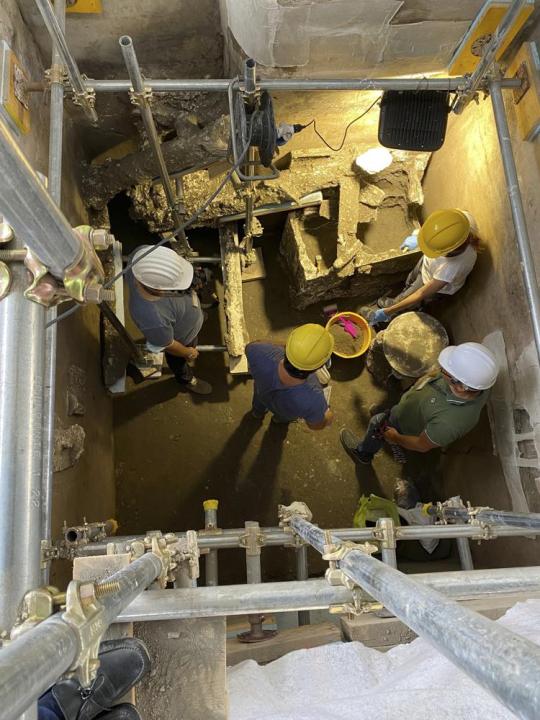

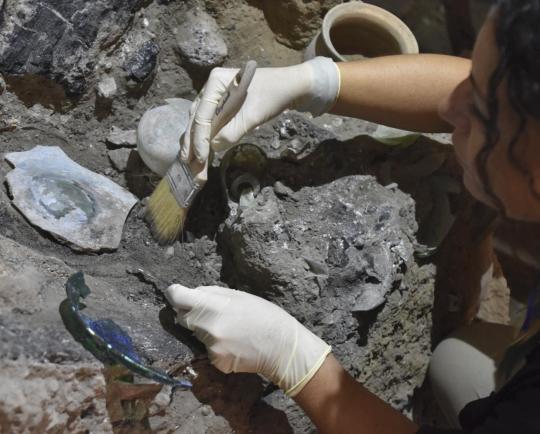
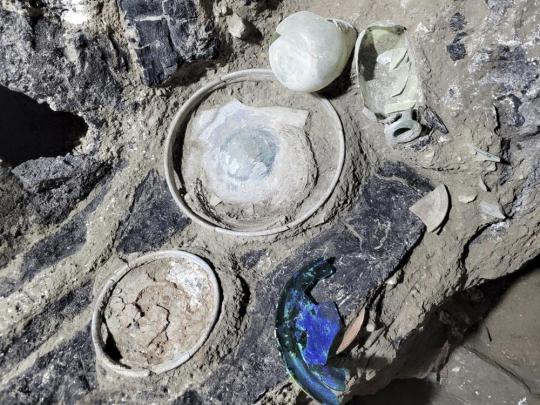
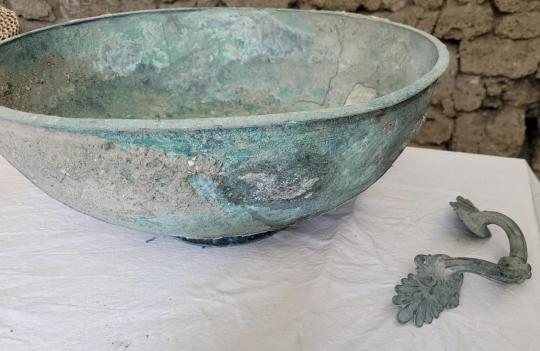

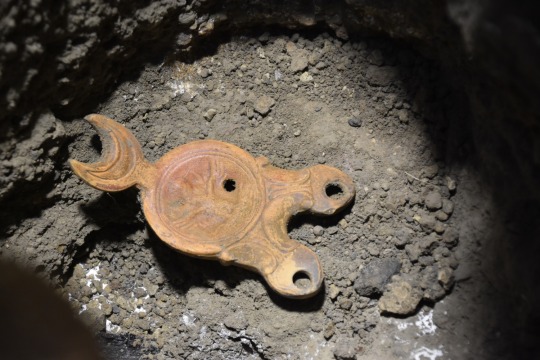

Discoveries in Pompeii Reveal Lives of Lower and Middle Classes
The latest discoveries in the excavation of Pompeii’s Regio V neighborhood are fully furnished utility spaces, of great archaeological significance for the details they preserve of a common domestic context in the 1st century Roman town.
The room was found in the House of the Enchanted Garden, a beautifully frescoed home with a lararium (a shrine to the household gods) that is one of the largest ever discovered in Pompeii. In 2021, archaeologists undertook an excavation and restoration of rooms on the ground floor in front of the lararium and the stories above it. They uncovered four rooms, two on the ground floor and two above, that were furnished. One was unfinished, with unplastered walls and an earthen floor, a jarring contrast in a house so decorated with such fine frescoes. The unfinished room was used for storage.
Archaeologists were able to make casts of the furnishings in the room which left a cavity in the hardened ash that could be filled with plaster. One room contained a bed frame and a pillow. The texture of the fabric was imprinted in the ash and is visible on the plaster cast. It is a very simple cot with ropes strung across the sides. There isn’t even a mattress, let along any decoration. Next to the bed was a wooden trunk divided into two compartments. The lid was open, but broken when the beams and floorboards of the story above collapsed in the eruption. Inside the trunk, archaeologists found a terra sigillata saucer and a double-spouted oil lamp depicting Zeus in the act of transforming into an eagle. Next to the trunk was a circular three-legged table with a shallow ceramic bowl containing two small glass bottles, a blue glass saucer and a terra sigillata bowl.
In the storage room, archaeologists were able to make two casts: a shelf and a group of wooden planks in different sizes, cuts and finishes, tied together. This was probably a collection of raw materials for assorted home maintenance projects from furniture patching to roof repair. Outside the room in a small hallway another utilitarian treasure was found: a tall wooden cabinet with at least four doors and five internal shelves. The top of the wardrobe and the front doors were damaged when the floor above the room collapsed. The remains of jugs, amphorae, bowls and plates were found on the damaged top shelf.
The excavation of the upper rooms revealed materials that were in the process of collapsing onto the rooms below. Of enormous archaeological value is a unique group of wax writing tablets. The group consists of seven triptychs tied both vertically and horizontally by a cord. A large cupboard, collapsed in the eruption, was also excavated. It contained different types of common use ceramics for kitchen and dining, as well as fine terra sigillata ceramics and glass. There was also a set of small bronze vessels, including a basin with palm leaf-shaped handles and a small jug decorated with a sphinx and lion’s head. Another special treasure is an incense burner shaped like a cradle with a male figure at one end. The polychrome paint coloring the figure and decorating the cradle with geometric designs is perfectly preserved.
The excavation overlapped onto a residential property behind the House of the Enchanted Garden, and there the plaster cast technique revealed the imprint of cane lathing in the mortar of a collapsed false ceiling. The cast shows the guts of Pompeiian construction: bundles of caning tied together by a thin cord and covered by a gauze-like fabric to separate the lathing from the wet mortar. Casts were also obtained of what appears to be wood paneling on the north, east and south walls of the room. Some are carved with coffered decoration; others are inlaid with delicate bone elements.
#Discoveries in Pompeii Reveal Lives of Lower and Middle Classes#House of the Enchanted Garden#archeology#archeolgst#ancient artifacts#history#history news#ancient history#ancient culture#ancient civilizations#roman empire#roman history
77 notes
·
View notes
Photo


*smooshes cheeks*
And of course lots of love to my supporters at Patreon! 🥰
#Ah what better way to spend this fine day than being out in a garden and squishing your partner's very squishable face.#connverse#Steven Quartz Universe#Connie Maheswaran#I'm sorry help I'm obsessed with his chubby face it's so cute 😭💕#Stress level lowers with each squish. (;u;#Super duper thanks to E350 for the shift of pledge!#Now using a typed font instead of hand-writing the names because I got a little annoyed how the names were uneven on my last shoutouts. 😅#Adding mentioning the tiers now that there are tier difference among my Patrons#Just will be doing commissioned works in the next few days then back to personal stuff midweek#Patreon#patreon shoutout#drawing type: baby blue#my shiz#SU#I really like the WildWord font#I wish Medibang has those with lower cases tho
137 notes
·
View notes
Text
THE KING’S BACK
#Aidoneus#Goodness this song is so cool#If y’all don’t know Aidoneus he’s the beautiful artist behind some songs in my Nevermore playlist#Like Persephone in the Garden & Devourer & my beloved ✨HYACINTHUS✨#Persephone in the Garden is when Annabel and Lenore first get to Nevermore like literally the beginning of episode 2 that’s the bit#Devourer is Lenore Annabel and Morella singing the low mid and high harmonies respectively like eps. 12-14#And then oughhhh HYACINTHUS is the arboretum with Lenore on the lower parts and Annabel on the higher and god like imagine#The ending part them like dancing and then ending with a kiss (ik they didn’t kiss then but one can dreammmm)#Anyway cool trans artist made cool song he’s making album soon too plz go check it outtttttt#Spotify
3 notes
·
View notes